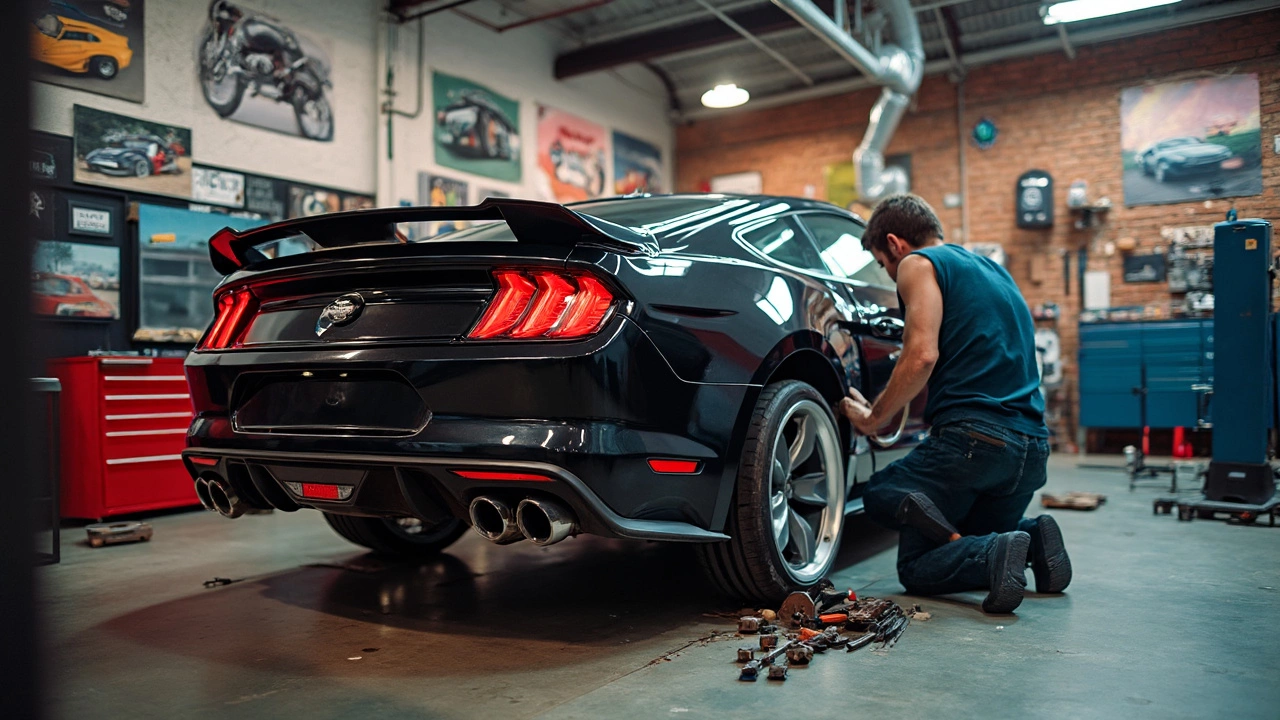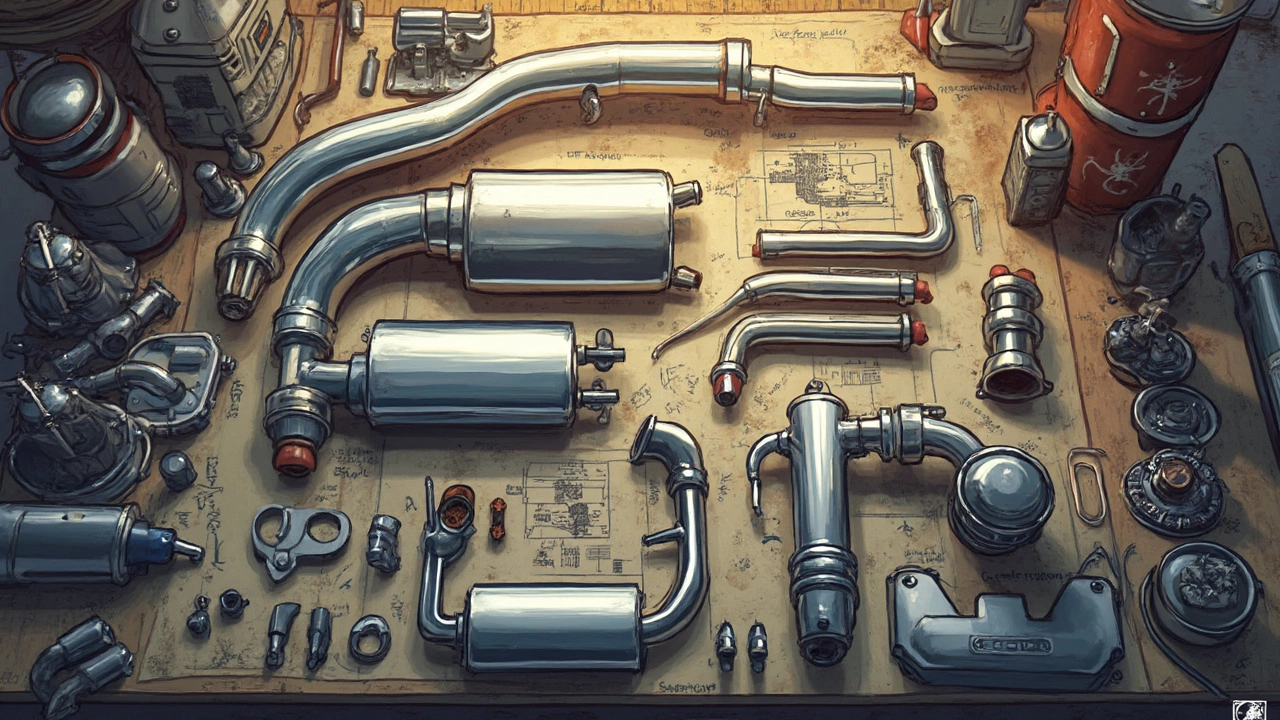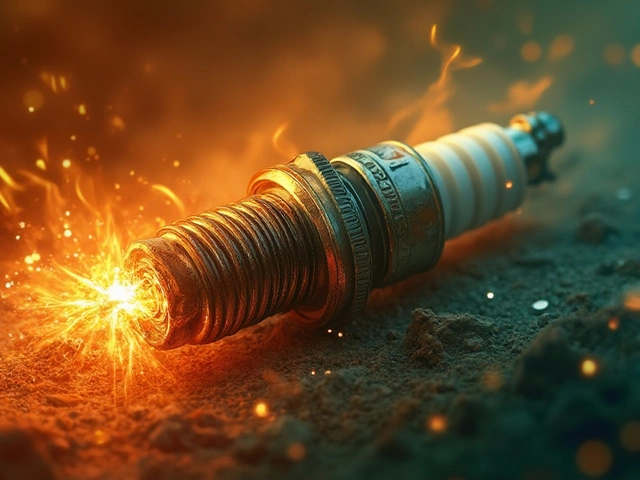When talking shop about cars, bringing up exhaust systems is like discussing the soul of your ride. This unassuming assembly of pipes affects not just emissions but also performance, sound, and even how your car feels on the road. Yeah, it's pretty important!
You might be wondering, what exactly is an exhaust system? Simply put, it's the pathway that guides exhaust gases from your engine out into the atmosphere, but it's not just about letting gases escape. A well-tuned system can improve engine performance, reduce noise, and lower emissions—a true multitasker.
There's a whole alphabet soup of exhaust types out there, each with its own quirks and benefits. Whether you're eyeing a cat-back system to boost power or wondering if a simple axle-back will do the trick, knowing the differences can make your choices much easier. Let’s cut through the jargon and see what suits your needs best.
- Understanding Exhaust Systems
- The Role of Exhaust Headers
- Cat-back Exhaust Systems Explained
- How Axle-back Systems Work
- Performance vs. Stock Systems
- Tips for Choosing the Right Exhaust
Understanding Exhaust Systems
When it comes to your car's exhaust system, think of it as your vehicle's respiratory system. Just like you inhale and exhale, your car needs to manage gases for optimal performance. But it's not just about keeping things in order—it's about enhancing performance, reducing noise, and minimizing harm to the environment.
The basic parts of an exhaust system include the exhaust manifold or headers, the catalytic converter, resonator, muffler, and various pipes connecting them. Each component plays a crucial role. The headers direct exhaust gases from the cylinders to the main pipe, essentially collecting gas efficiently from multiple points and guiding it into one outlet. This efficiency can lead to improved engine performance, which is why folks looking for a performance increase often start here.
Next in line is the catalytic converter. This little wizard transforms harmful gases into less harmful emissions before they exit the car. It’s all about hitting those stringent emission standards without breaking a sweat—or your budget.
The resonator and muffler are the unsung heroes. The resonator fine-tunes the sound by filtering it, while the muffler reduces noise. Together, they make sure your car purrs like a kitten instead of roaring like a lion every time you hit the gas.
These systems aren't just assembled hodgepodge; they follow specific designs to match your vehicle's requirements. Engineers consider everything from engine backpressure to vibration and noise reduction. All those sounds and emissions you barely notice? They're results of someone's hard work getting the exhaust system just right.
Looking to upgrade? Many turn to aftermarket options to enhance performance and sound. Performance exhaust systems, particularly cat-back or axle-back configurations, offer a mix of sound control, power improvement, and aesthetic satisfaction. And let’s face it, who doesn't love a sleek exhaust tip gleaming in the sunlight?
The Role of Exhaust Headers
Exhaust headers might sound like some fancy car part, but they play a crucial role in how your vehicle breathes. Think of them as the lungs of your engine. They are designed to manage the exhaust gases coming out of the engine's cylinders and optimize the flow. Why does this matter? Because a smoother flow means your engine works less to push exhaust out, improving performance.
Headers are all about reducing something called backpressure. Each cylinder has its own exhaust manifold or pipe to expel gases, but stock manifolds often mash them together quickly, causing a bottleneck. Quality headers, on the other hand, route them more efficiently, so gases don’t jumble together too soon. This setup helps in freeing up horsepower and torque, especially noticeable when you rev up your engine.
You’ll find two main types of headers: shorty headers and long tube headers. Shorty headers are more compact, fitting into tighter spaces and might be an easier install for most daily drivers. Long tube headers require a little more legroom and effort to install but shine in performance, especially if you’re into racing or heavy modifications.
- Shorty Headers: Easier to install, good for daily use, and a modest performance boost.
- Long Tube Headers: Better for high performance, requires more space, but offers significant gains in horsepower.
In choosing the right headers, it's worth considering what you're aiming for. Daily driving casuals or weekend warriors might lean toward shorty headers for that balance of ease and benefit. But if you're chasing the adrenaline rush on the track, long tubes may just be worth the extra hassle.
So, next time you think about exhaust systems, don't overlook those headers. They're more than pipes; they're key players in the quest for better car performance.
Cat-back Exhaust Systems Explained
So, what's all this buzz about cat-back exhaust systems? These systems are like the cool upgrade every car enthusiast seems to love. Starting from the catalytic converter, they include everything behind it, like the muffler and tailpipe.
When you swap your factory exhaust for a cat-back system, you're not just changing how your car sounds while rolling down the street. You're potentially boosting performance too. Because these systems often use larger diameter pipes and more efficient mufflers, you can lower exhaust backpressure. And what does that mean? More horsepower, baby!
But performance isn't the only thing. Let's talk sound. With a cat-back system, your car can go from a whisper to a roar, depending on the setup. It's a bit like giving your car a new voice. Whether you want that subtle growl or the full-blown sports car scream, there's probably a setup that fits your style.
Now, not all cat-backs are built equal. They vary in materials (like stainless steel vs. aluminized steel) and in design. And here's a fun stat: stainless steel systems can last even longer than the car itself, which is great for those who don’t want to keep swapping parts.
If you're eyeing an upgrade, consider what you want most: performance gains, sound quality, or a bit of both. Just remember, while cat-backs can improve power and sound, they're not magic. They work best when tuned with other elements like intake systems and headers.
Here's a quick rundown of why people love these systems:
- Improved Power – Lower backpressure = more power.
- Sound Customization – Choose from a variety of sound levels and tones.
- Durability – Opt for materials that withstand the elements.
- Visual Appeal – Some setups just look cooler with polished tips or unique designs.
Before you dive in, think about your car make, model, and year, as certain setups fit better with certain engines. Like everything car-related, research, and a little planning make the ride smoother.

How Axle-back Systems Work
So, you’ve got your heart set on tweaking your car’s sound and performance, but you don’t want to mess with a complex installation. Enter the axle-back exhaust system. These systems are perfect for those looking to boost their car’s soundtrack without diving into the more exhaustive, pun intended, modifications.
An axle-back system is exactly what it sounds like—it replaces the pipes and the muffler from the rear axle to the tailpipe. This means you're not swapping out any components connected to the catalytic converter, making these systems usually street legal and pretty easy to install. You unbolt your current exhaust just behind the rear axle and bolt the new one on. It's like a weekend project anyone can tackle with a bit of enthusiasm.
Although it might not provide the same performance boost as a cat-back exhaust system, it does offer noticeable improvements, especially in sound quality and exhaust tone. Believe it or not, that deep growl you hear on some performance cars comes from systems like these. Plus, it's easier on the pocket and offers a decent mix of aesthetics and acoustic pleasure.
"Not everyone wants to go full-throttle on performance upgrades. An axle-back system gives you the blend of enhancement and simplicity," explains Joe Thompson, lead engineer from Rev-Performance.
Still curious if an axle-back system is right for you? Here’s what to consider:
- Sound Preference: Want a throatier exhaust note? This will do the trick.
- Installation Skills: Basic tools and garage space are all you need, no mechanic required.
- Budget: Axle-backs are a budget-friendly entry point into the world of exhaust systems.
- Emission Laws: Most of these systems keep your car street legal.
While these systems don’t radically transform performance, their ease of installation and sound enhancement make them a sweet spot for many enthusiasts. Just imagine cruising down the road with that deep, satisfying rumble—it sounds alright, doesn’t it?
Performance vs. Stock Systems
When it comes to car exhaust systems, the big debate often boils down to: performance systems or sticking with stock? Both have their pros and cons, and it really comes down to what you’re wanting out of your vehicle. Let's break it down.
Stock exhaust systems are what you're getting straight out of the factory. They're designed to meet general regulations for noise, emissions, and cost efficiency. So, they might not give you that sporty growl, but they're reliable and get the basic job done. Want peace of mind without any fuss? Stock systems might be your jam.
On the flip side, performance exhaust systems are all about enhancing power and sound. You know, that deep rumble that sets hearts racing. These systems usually have wider pipes, less restrictive bends, and high-flow mufflers. What does this mean for you? Better airflow, reduced back pressure, and often a noticeable boost in horsepower.
But before you rush into making your car roar, consider a couple of trade-offs. Performance systems can sometimes lead to more cabin noise—a constant hum that might drive you bananas on long drives. Plus, they're a bit pricier, which isn't surprising given the materials and tech involved.
Deciding between the two? Ask yourself these questions:
- Are you looking for better performance during races or just a cool daily drive?
- How important is sound to you? Do you want to turn heads or keep things low-key?
- Are you willing to invest more for potential power boosts?
Here's a quick comparison:
| Aspect | Performance Systems | Stock Systems |
|---|---|---|
| Sound | Loud and sporty | Quiet and subdued |
| Cost | Higher | Lower |
| Performance Boost | Potential horsepower gain | Standard performance |
In the end, whether you stick with stock or rev up with a performance system depends on your personal style and driving needs. Just make sure whatever you choose, it's legal where you live, and always consider any warranty implications if you're making changes.
Tips for Choosing the Right Exhaust
Picking the right exhaust system can transform your vehicle into a beast on the road or a quiet cruiser. It's about finding a balance between sound, performance, and budget.
First off, decide what you want from your car exhaust. Are you looking to boost performance, reduce emissions, or simply want that deep growl under the hood? Identifying what’s important to you will narrow down your choices substantially.
Pro tip: always consider your car’s make and model compatibility. Not all exhaust systems work with every vehicle. It’s like trying to fit a square peg into a round hole—frustrating and ineffective.
Here's a quick checklist to guide your decision:
- Performance Gains: If extra horsepower is your goal, a complete system like a cat-back might be the way to go. These can help increase airflow and engine efficiency.
- Sound Preference: Listen to different exhaust sounds before committing. YouTube is a treasure trove for this. Some systems give a subtle hum while others roar.
- Budget: Performance systems can get pricey. Set a budget and see what fits into it without breaking the bank. Remember, expensive doesn’t always mean best.
- Material: Stainless steel is more durable than aluminized steel, making it a top choice for longevity, especially in nasty weather conditions.
Also, keep emissions in mind. Some states have strict regulations on noise and emissions levels; consider stock or OEM parts if you want to stay on the safe side.
Don’t forget to consult a professional. They can give advice tailored to your specific car and expectations. You might love DIY, but when it comes to major car modifications, expert insight can save you time and money.




